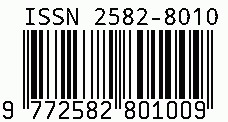
International Journal of Leading Research Publication
E-ISSN: 2582-8010
•
Impact Factor: 9.56
A Widely Indexed Open Access Peer Reviewed Multidisciplinary Bi-monthly Scholarly International Journal
Plagiarism is checked by the leading plagiarism checker
Call for Paper
Volume 6 Issue 7
July 2025
Indexing Partners



















Severe Surface Deformation of Metallic Biomaterials: A Study of Techniques, Mechanisms, and Biomedical Applications
| Author(s) | Nawlesh Kumar Singh, Dr. Sunil Kumar Singh |
|---|---|
| Country | India |
| Abstract | The success of biomedical implants significantly depends on the surface properties of the materials used. Titanium, stainless steel, and cobalt-chromium alloys are widely applied in orthopedic and dental applications due to their mechanical strength and corrosion resistance. However, these materials often face challenges in terms of poor bioactivity and susceptibility to surface degradation. Severe Surface Deformation (SSD) techniques—including Shot Peening (SP), Surface Mechanical Attrition Treatment (SMAT), and Laser Shock Peening (LSP)—have emerged as effective alternatives to traditional methods by inducing nanocrystalline surfaces. This study provides a comprehensive discussion of the mechanisms, applications, advantages, and limitations of SSD techniques. It also highlights material-specific outcomes, biological responses, and prospective directions, aiming to bridge the gap between materials science and biomedical engineering. |
| Field | Engineering |
| Published In | Volume 6, Issue 6, June 2025 |
| Published On | 2025-06-24 |
| Cite This | Severe Surface Deformation of Metallic Biomaterials: A Study of Techniques, Mechanisms, and Biomedical Applications - Nawlesh Kumar Singh, Dr. Sunil Kumar Singh - IJLRP Volume 6, Issue 6, June 2025. DOI 10.70528/IJLRP.v6.i6.1625 |
| DOI | https://doi.org/10.70528/IJLRP.v6.i6.1625 |
| Short DOI | https://doi.org/g9t8g3 |
Share this


CrossRef DOI is assigned to each research paper published in our journal.
IJLRP DOI prefix is
10.70528/IJLRP
Downloads
All research papers published on this website are licensed under Creative Commons Attribution-ShareAlike 4.0 International License, and all rights belong to their respective authors/researchers.

